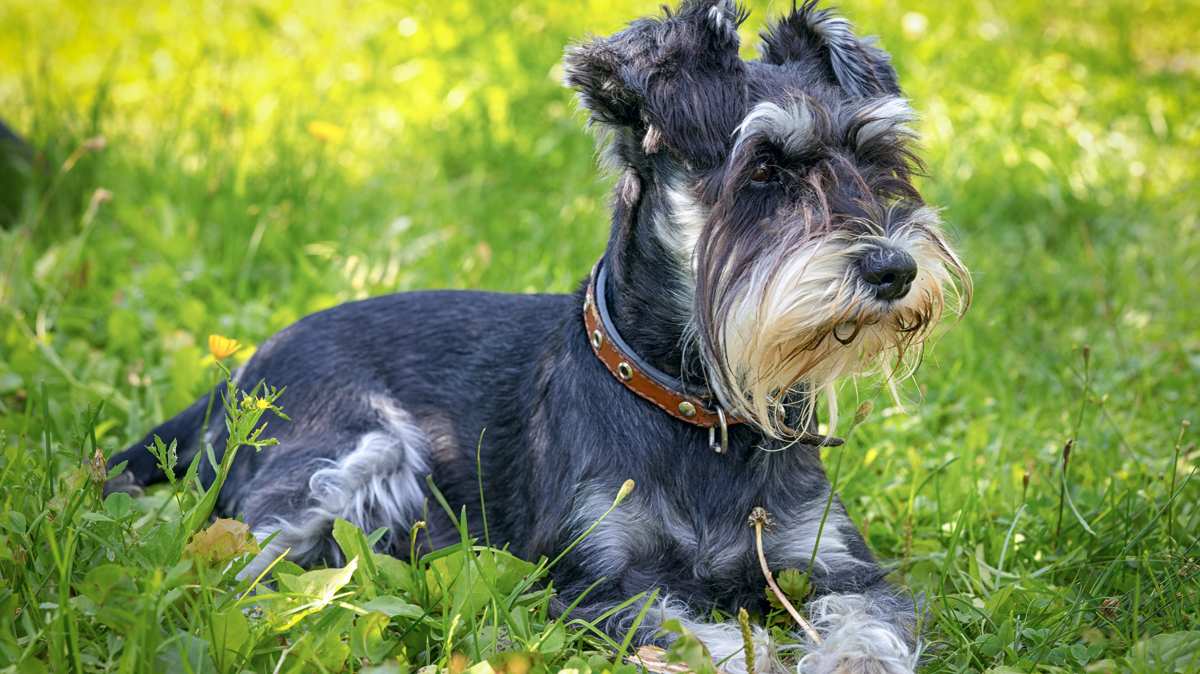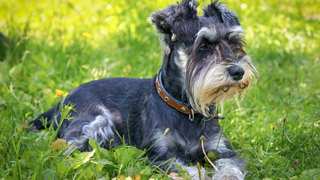Spunky, intelligent, loyal, and extremely personable, the Mini Schnauzer is considered by many to be the ideal family pet. This breed is normally alert, courageous, and at times territorial and rambunctious, but it is also obedient and extremely easy to train.
Some Mini Schnauzers are known for their selfishness, sensitivity, and stubbornness, and because it was bred to chase vermin, the breed may be feisty with smaller animals; but with a bit of training, experts say, a Mini will quickly learn manners. These dogs are also very noisy, and will give howl-like barks to express themselves quite often. Trainers recommend setting firm boundaries and practicing consistent punishment/reward methods to control this barking tendency. One advantage of a Mini Schnauzer’s vocal nature, though, is that it makes an excellent watchdog; it is intensely curious but not aggressive. This breed gives true meaning to the phrase “His bark is worse than his bite”!
Because of their breeding as ratting dogs, Mini Schnauzers often do quite well in agility and obedience competitions, and they are excellent a learning tricks, especially those that involve jumping. But because of their instinctive curiosity, this breed will often “run off” to chase other animals, so using a leash when the dog is outside is recommended, as is a fenced yard. Many experts recommend crate training a Mini Schnauzer, especially as a puppy, to help the dog learn a proper sense of place.




